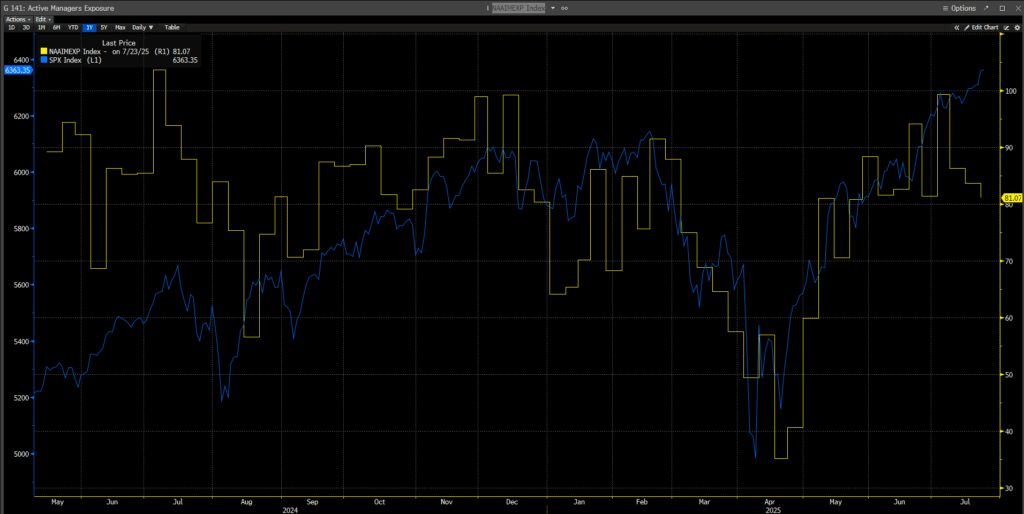
Chart Source: Bloomberg
The chart above compares investor positioning, as measured by the NAAIM Exposure Index (yellow line), with the S&P 500 Index (blue line) over the past year. The NAAIM index reflects how active managers are allocating capital to U.S. equities, higher readings indicate more bullish positioning, while lower readings reflect caution or underweight stances.
What this chart reveals is a textbook example of a pain trade – a scenario in which the market moves sharply in the opposite direction of consensus positioning, forcing investors to chase performance or cover wrong way bets.
The turning point began in February 2025. A measured sell-off triggered a synchronized retreat by active managers, who systematically cut exposure as volatility increased. This was a rational move at the time as momentum had turned negative and fears over tariffs and macro instability were escalating.
But then came the unexpected: following the jolt of Liberation Day, the administration delayed the most severe tariff measures. This sparked a violent reversal in equity markets, with the S&P 500 rallying hard through March and April. Notably, investor positioning failed to follow. The so-called “smart money” continued to de-risk, expecting the rally to fade or the macro picture to worsen.
Instead, the rally gained steam. With the TACO trade in full effect, AI-driven earnings growth back into the fold, and risk appetite returning, the S&P 500 powered higher. As the market climbed, underexposed managers were forced to chase returns, compounding the pain for those who had cut risk at the lows. This tail-wagging-the-dog dynamic, where price action drives positioning rather than the other way around, fueled even more upside.
Now, as of late July, we’re heading into a crucial earnings season with the S&P 500 trading near a historically lofty 23x forward earnings. And positioning is beginning to mirror the pain trade after liberation day. Exposure sits at just 81, down from earlier highs, showing that skepticism remains high despite the tape.
That leaves us with several open questions:
- Are managers right to be cautious at these valuations, or are they once again underestimating the power of non-tariff effects, earnings, and sentiment?
- Or are we nearing a top – where stretched multiples and one-sided sentiment catch up as the tariff effects begin to show themselves in inflation and growth?
- If earnings come in strong, will positioning be forced higher, driving markets further in a feedback loop?


